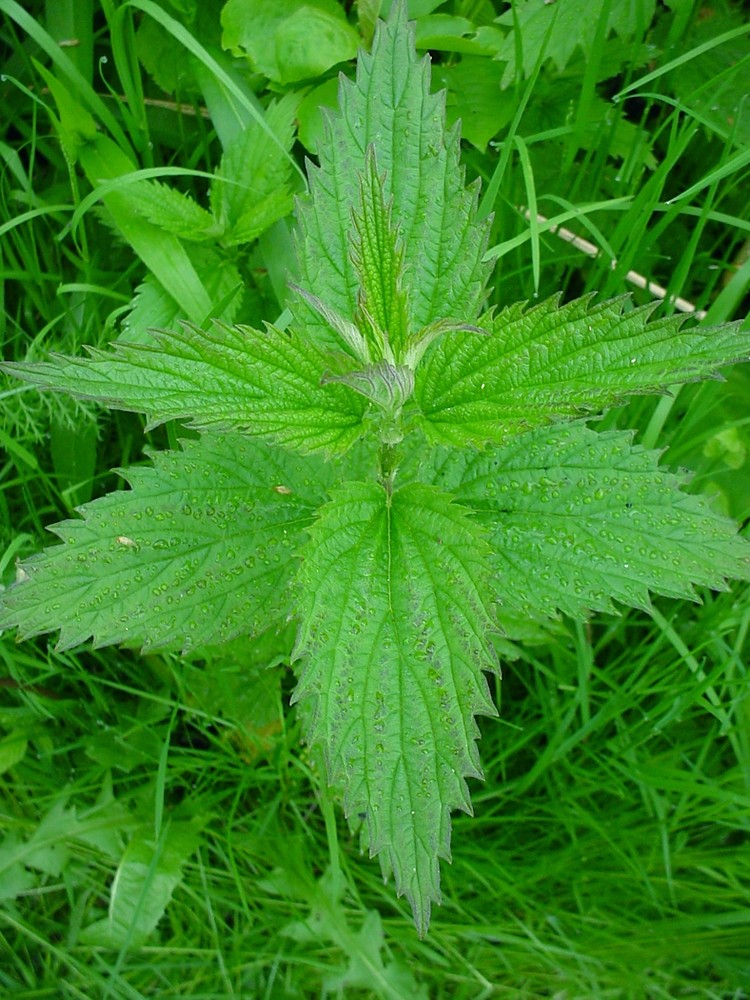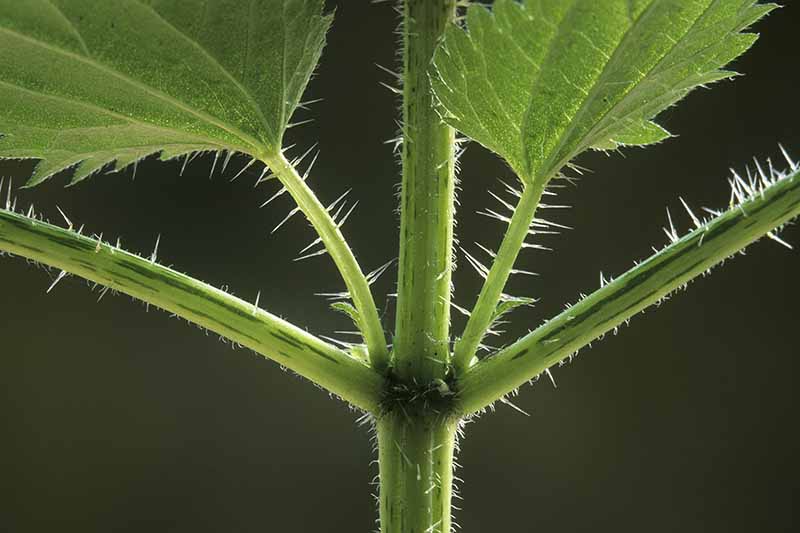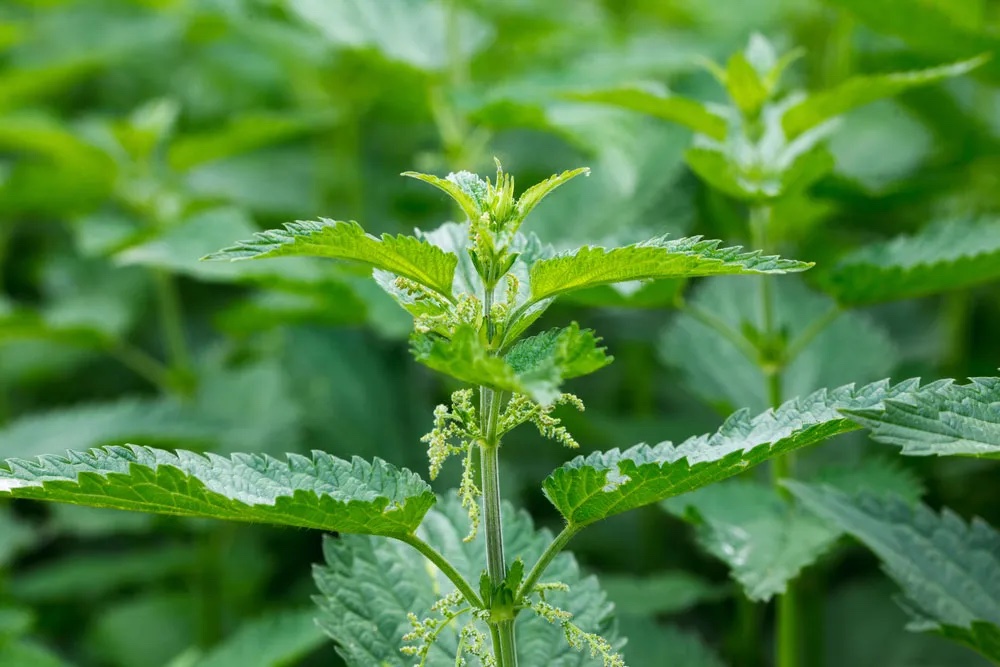Urtica dioica

Capable of growing just about anywhere, stinging nettle (urtica dioica) is a flowering plant that flourishes in soils fertilized by human or animal waste or even along the edges of meadows worldwide.1 This plant can grow rather tall (3-7 feet), and can be recognized by its bright green leaves that sprout in opposing pairs down the stem.1 Additionally, there is a serrated, or tooth-like pattern on the edges of the leaves.
Medicinal Uses and Indigenous Practices

The name of this plant comes from the stinging sensation felt when you brush up against the small hairs (trichomes) that cover the stems and the leaves. The sensation, interestingly, is a result of the chemicals in the hairs, namely histamine, acetylcholine, serotonin, and formic acid.2 But this sting, despite its upsetting feeling, has been shown to be beneficial when it comes to inflammation reduction and improving circulation.2 All of this falls in line with nettle’s longtime use as a treatment for rheumatism and arthritis.2, 3
While you should be wary of its sting when you harvest it, this plant offers many medicinal benefits, including its performance as an antiscorbutic, diuretic, and astringent.3 Nettles also has a very high iron content which makes it good for treating anemia or as a supplement for people on their period with an added benefit of helping with menstrual cramps.2
In Indigenous practices, nettle has been used during childbirth to prevent excess bleeding.2 Dried and powdered or fresh and pounded, nettle leaves are often placed on wounds to stop bleeding. Beyond native medicinal practices, this plant has found its applications in textiles for clothing and even fishing nets in native tribes.2
Harvesting Advice
When it comes time to harvesting the plant, it is best to do so in spring or early summer, before flowering. Regardless of the month you do so, there are always beneficial properties, but they do vary with the growing period. For example, one study has shown that plants harvested in May have the highest antioxidant activity.4 If harvested fresh or used dried, nettles can be steeped into a tea.1 Or, if you desire a salad substitute, nettle is a great option because of its high protein content, and it can even be turned into a pesto.1
References
- Workshop with Susan Pincus. 10 April 2024 ↩︎
- LeBaron-Botts, Petra. “Two Burning Houses: A Natural History of Stinging Nettle – North Cascades Institute.” North Cascades Institute – Connecting People, Nature, and Community since 1986, 20 Oct. 2015, https://blog.ncascades.org/naturalist-notes/two-burning-houses-a-natural-history-of-stinging-nettle/. ↩︎
- Williams, Stephen W. Report on the Indigenous Medical Botany of Massachusetts, 1849. pp. 13 ↩︎
- Paulauskienė, Aurelija et al. “Influence of Harvesting Time on the Chemical Composition of Wild Stinging Nettle (Urtica dioica L.).” Plants (Basel, Switzerland) vol. 10,4 686. 2 Apr. 2021, doi:10.3390/plants10040686 ↩︎
